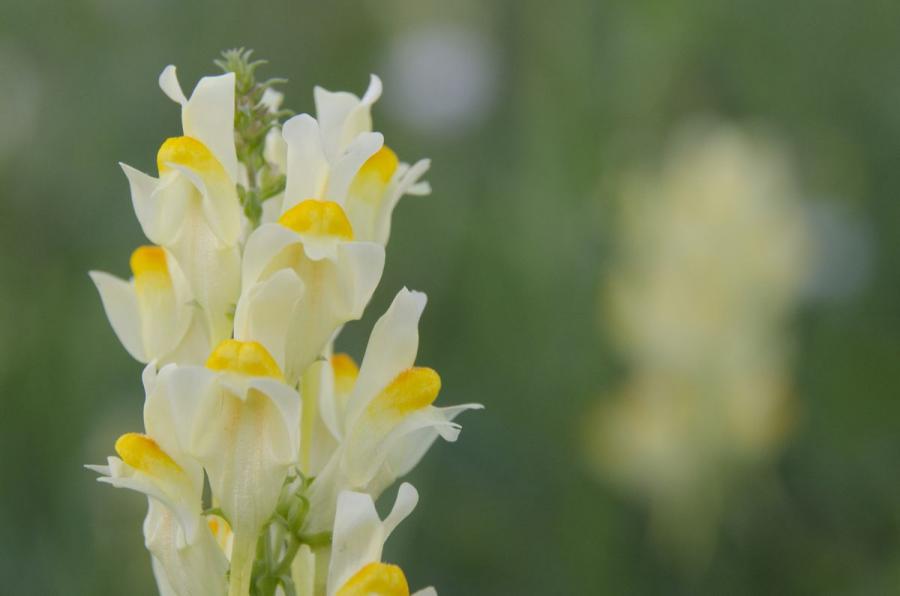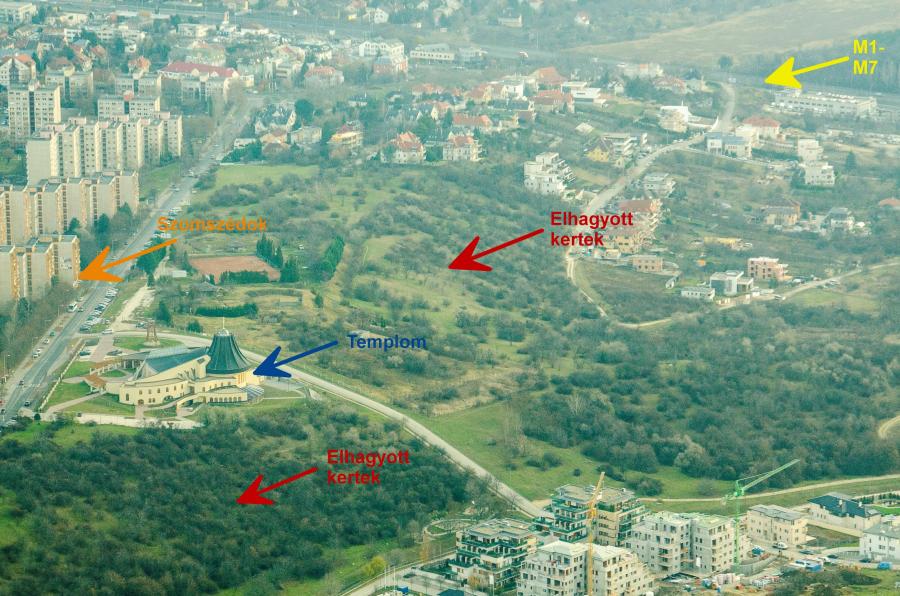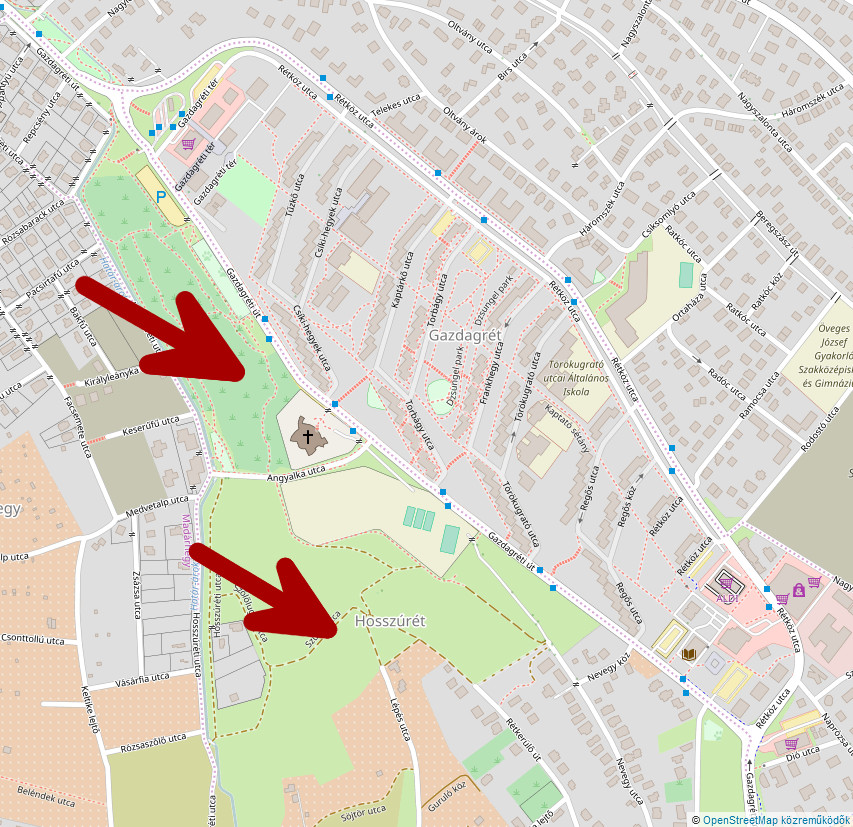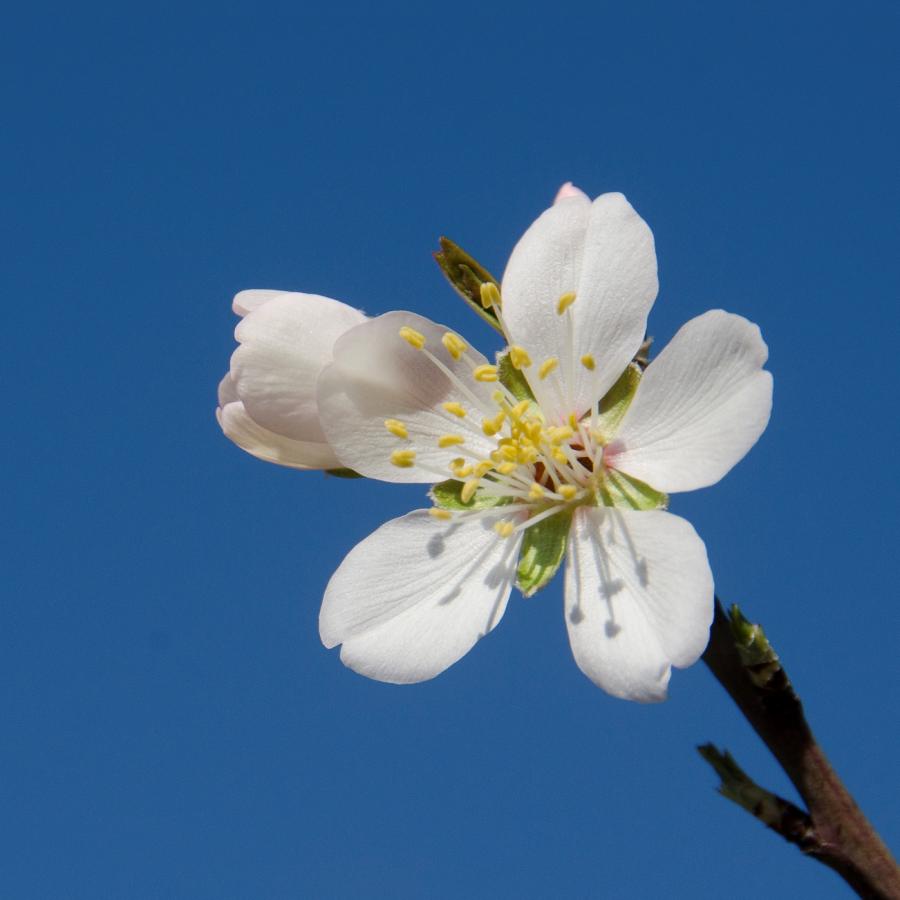Southwestern slope near Gazdagrét, Budapest
 < Common toadflax (photo taken by Bálint Bajomi)
< Common toadflax (photo taken by Bálint Bajomi)
AIMS
Gazdagrét and its surroundings was a weekend plot area 30-40 years ago with orchards and small cottages. A housing estate was built between 1983 and 1989. Besides the finally built up areas, the hillside on the southwest exposure on the neighboring Hosszúrét was also expropriated by the Council of the Capital. Originally, houses would have been built here, but in the end the construction was cancelled. The fences and the wooden houses have been demolished, and now there is a special semi-wild, open woodland. A few of the old fruit trees - nuts, almonds, cherries, etc. - still stands today and produces abundant drupes. Meanwhile, secondary sucession began, and wildlife of the surrounding mountains also settled in: nowadays, common toadflax (Linaria vulgaris), bladder-senna (Colutea arborescens), field maple (Acer campestre), Balkan woodpeckers (Dendrocopos syriacus) and common nightingale (Luscinia megarhynchos) also occur there, along with many other species. In a remarkable part of the area, thick woody and bushy vegetation has been developed, which alternates mosaically with the more open, grassy parts.
As members the former Gazdagrét Civic Circle, we proposed in the middle of the 1990s, that the area be gradually transformed into downy oak shrub vegetation, similar to the nearby Rupp Hill Nature Reserve, while leaving the fruit trees in the area. Around 1996, about five manna ash trees were planted from tender money - two of them were sprouted.
 Aerial view of the target area and its surroundings. Orange arrow: the blockhouse where the series 'Neighbours' was filmed; blue arrow: "The Temple of László Father"; yellow arrow: M1-M7 motorway and Budaörs Road; red arrow: restoration target area. In 1987, the place of the houses in the lower right corner the workers of the Sasad Cooperative have plowed with tractors. (photo taken by Bálint Bajomi)
Aerial view of the target area and its surroundings. Orange arrow: the blockhouse where the series 'Neighbours' was filmed; blue arrow: "The Temple of László Father"; yellow arrow: M1-M7 motorway and Budaörs Road; red arrow: restoration target area. In 1987, the place of the houses in the lower right corner the workers of the Sasad Cooperative have plowed with tractors. (photo taken by Bálint Bajomi)
Now the area is completely surrounded: on one side it is bordered by the housing estate, and on the other side, the villas and condominiums of wealthy families. Hence, it would be particularly justified to remain green in the long run. In 2016 we revived the twenty-year vision and re-launched the implementation. In the course of 2016, I contacted Nóra Király, District Vice Mayor, who supported the idea. However the legal act will have to be initiated not at district level but at capital level.
 < Map from Openstreetmap of the area. Red arrows show the restoration target area.
< Map from Openstreetmap of the area. Red arrows show the restoration target area.
MATERIALS AND METHODS
In order to support the protection and restoration as thoroughly as possible, we carry out extensive scientific studies in the field: biotic surveys, water quality and soil testing. We involve both experts and lay community of the area in this process.
RESULTS
In 1987 I moved to Gazdagrét, since then I continuously record the species on the hillside. We would like to select protected, Natura2000, or even the highly protected species from these. In the fall of 2016 Sándor Tatár, my water quality expert colleague, examined the water quality of the Hosszúréti stream (Kő stream) at the bottom of the hill and found that 'the results were much better than expected'. With András Mártonffy, a botanist student, we maped the flora and recorded the GPS coordinates of the plants. In 2018, with Dr. Péter Nagy we would like to carry out a study of the soil living community of three samples in the Szent István University, Gödöllő. I hope that the experts of the Hungarian Biodiversity Research Society will also help in the exploration and documentation of the diverse wildlife developed in the past decades. To do so, we would like to obtain financing through tenders. We also launched a 'citizen science' study process involving the lay volunteers living in the area to collect the data. Using the abovementioned detailed information, the next step will be the formal launch of the declaration process of protection.
As mentioned above, we want to turn the hillside in the long run towards a natural vegetation. In the summer of 2017, we asked the Ptential Vegetation Research Group of MTA Centre for Ecology for, and we received, information about the potential vegetation of the area, which we hope will help the implementation.
 The almond trees remained from the former gardens here (photo taken by Bálint Bajomi)
The almond trees remained from the former gardens here (photo taken by Bálint Bajomi)
INFORMATIONS
Bálint Bajomi, the co-ordinator of the project (personal webpage, contact information)
RELATED PUBLICATION
There is no scientific publication on the project. In 1996 I wrote about the wildlife of the Gazdagrét hillsides in the district journal 'Részünkről' and in 2001 in the local history book about Gazdagrét. In the local newspaper 'Gazdagréti Hírmondó' I published a promotional article about the project in 2017, and in we mentioned the topic also in an interview published in Élet és Tudomány.
Bálint Bajomi, biologist